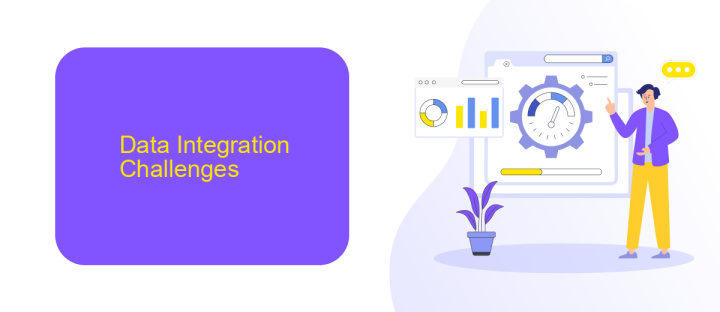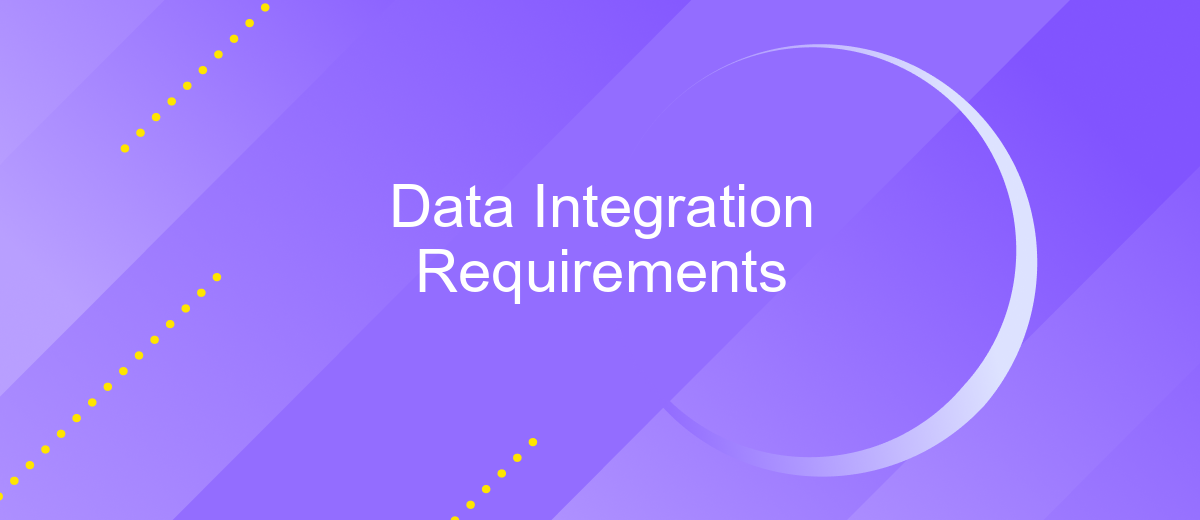Data Integration Requirements
In today's data-driven world, effective data integration is crucial for organizations to harness the full potential of their information assets. Understanding the requirements for seamless data integration can significantly enhance decision-making processes, operational efficiency, and overall business intelligence. This article delves into the essential prerequisites for successful data integration, offering insights and best practices to ensure a cohesive and streamlined data ecosystem.
Introduction
Data integration is a critical process for modern businesses, enabling them to combine data from various sources into a unified view. This process is essential for informed decision-making, operational efficiency, and gaining a competitive edge. The requirements for effective data integration can vary significantly depending on the specific needs and goals of an organization.
- Data Source Connectivity: Ensuring seamless integration with diverse data sources.
- Data Quality and Consistency: Maintaining high standards of data accuracy and uniformity.
- Scalability: Supporting growing data volumes and increasing complexity.
- Real-Time Processing: Enabling timely data updates and analysis.
- Security and Compliance: Protecting data integrity and adhering to regulatory standards.
Tools like ApiX-Drive facilitate the integration process by providing a user-friendly platform to connect various applications and services. By leveraging such tools, organizations can streamline their data workflows, reduce manual intervention, and ensure that their data integration efforts are both efficient and effective. Understanding these requirements is fundamental to implementing a robust data integration strategy.
Data Integration Challenges

Data integration often presents numerous challenges, primarily due to the complexity and diversity of data sources. One of the main issues is data inconsistency, where different systems may store data in various formats, leading to difficulties in harmonizing and merging this information. Additionally, the sheer volume of data can strain existing infrastructure, making it essential to have robust systems in place to manage and process large datasets efficiently.
Another significant challenge is ensuring data security and compliance, especially when integrating data from multiple sources with varying security protocols. This can lead to vulnerabilities and potential breaches if not managed correctly. Tools like ApiX-Drive can simplify this process by providing seamless integration solutions that are secure and compliant with industry standards. ApiX-Drive facilitates the connection of disparate systems, ensuring data flows smoothly and securely, thereby mitigating many of the common challenges associated with data integration.
Requirements Analysis

In the process of data integration, understanding and defining the requirements is crucial for a successful implementation. The requirements analysis phase involves identifying the specific needs and challenges that the integration must address. This ensures that the final solution is tailored to meet the unique demands of the organization.
1. **Data Sources Identification:** Determine all the data sources that need to be integrated, including databases, APIs, and third-party applications.
2. **Data Transformation Needs:** Specify the transformations required to standardize and cleanse data from various sources.
3. **Integration Tools:** Select appropriate tools and platforms, such as ApiX-Drive, to facilitate seamless data integration.
4. **Security and Compliance:** Ensure that the integration process adheres to security standards and regulatory requirements.
5. **Performance Metrics:** Define performance benchmarks to measure the efficiency and effectiveness of the integration.
By conducting a thorough requirements analysis, organizations can mitigate risks and ensure a smooth data integration process. Leveraging tools like ApiX-Drive can simplify the integration by providing pre-built connectors and automation features, ultimately leading to enhanced data consistency and accessibility.
Data Integration Tools

Data integration tools are essential for combining data from various sources into a unified view, ensuring seamless data flow and consistency. These tools help organizations manage and analyze their data more effectively, enabling better decision-making and operational efficiency.
There are numerous data integration tools available, each offering unique features and capabilities to address different integration challenges. Selecting the right tool depends on factors like data volume, integration complexity, and specific business requirements.
- ETL Tools (Extract, Transform, Load)
- Data Virtualization Tools
- API Management Platforms
- Cloud-based Integration Services
- Real-time Data Integration Tools
One notable service is ApiX-Drive, which simplifies the integration process by allowing users to connect various applications and automate data workflows without requiring extensive technical expertise. By leveraging such tools, businesses can streamline their data integration efforts, reduce manual work, and ensure data accuracy across their systems.
Best Practices
When implementing data integration, it's crucial to clearly define your requirements and objectives from the outset. This includes understanding the data sources, formats, and frequency of data exchange. Utilize tools like ApiX-Drive, which can streamline the integration process by offering a user-friendly interface and a wide range of supported applications. Properly mapping out your data flow will help avoid potential issues and ensure a smooth integration process.
Another best practice is to ensure data quality and consistency. Regularly monitor and validate the data being integrated to maintain accuracy and reliability. ApiX-Drive offers features that allow for real-time data synchronization and error handling, which can significantly reduce the risk of data discrepancies. Additionally, always document your integration processes and configurations to facilitate easier troubleshooting and future updates. This proactive approach will help maintain the integrity of your integrated systems over time.
FAQ
What is data integration?
Why is data integration important for businesses?
What are the common challenges in data integration?
How can businesses automate their data integration processes?
What factors should be considered when selecting a data integration tool?
Routine tasks take a lot of time from employees? Do they burn out, do not have enough working day for the main duties and important things? Do you understand that the only way out of this situation in modern realities is automation? Try Apix-Drive for free and make sure that the online connector in 5 minutes of setting up integration will remove a significant part of the routine from your life and free up time for you and your employees.

